When we think about tackling sustainable human development, we often hear words like multidisciplinary, interdisciplinary and transdisciplinary being used to describe new and fashionable ways of working. These terms have no commonly agreed definitions, and this can lead to confusion. In Change Makers, we use the words as follows:
- Multidisciplinary – bringing together distinct ideas or methods from multiple disciplines to enhance understanding of a phenomenon (the disciplinary contributions remain distinct)
- Interdisciplinary – synthesising new methods or approaches to a phenomenon by combining disciplinary ideas or methods (the disciplinary roots of the contributions are acknowledged, but the product belongs to no discipline)
- Transdisciplinary – approaching a phenomenon with no disciplinary lens at all (completely independent of disciplinary boundaries)
Thinking outside of disciplinary boundaries can be incredibly helpful, but we must recognise that most of our education and learning experiences have occurred in a strongly disciplinary structure. We have been taught within this framework, and have chosen to specialise within disciplines and sometimes even sub-disciplines. Integrating ideas that step outside these boundaries must therefore begin with a recognition of why these boundaries exist in the first place, and what they mean to us and to the science and engineering professions.
Disciplinary Contexts
The great benefit of organising learning and research into disciplines is that it allows a division of labour and greater specialisation of knowledge (Holbrook, 2010). As we learn more and more about the natural world and our presence in it, there becomes too great a body of knowledge for each individual to know everything. In the interests of cultivating depth of knowledge, the disciplines serve us well. However, the disciplinary approach to the world becomes less useful as the disciplines become more boundaried, and approaches and methodologies become distinct across disciplines. It might therefore be the case that sustainable human development makes demands of science and engineering that may best be answered from a non-disciplinary standpoint.
Within the domain of sustainable human development there are a number of critical tensions – possibly the most important of which being between the local and global context. Approaches to analysing problems, our valuing of knowledge and expertise and the engagement of communities and implementation of change are all part of this tension. The public discourse encourages us to value the global approach – we are told that global action is needed to combat sustainability challenges such as climate change. But is it global ‘action’ that is required, or rather global engagement with local action? Can any sustainability challenge be answered by a global or widely implemented homogenous response?
Complexity is the enemy of mastery
If science and engineering are problem-solving disciplines, and sustainable human development presents a number of problems, why is a new approach needed? The answer lies in the nature of the problem. Unlike our organisation of knowledge, research and technical processes, problems in the real world do not abide by disciplinary boundaries. This means that many problems require the expertise of more than one discipline to be effectively tackled. Hansson (1999) advocates interdisciplinary practice for solving problems of this nature. However, he also notes that interdisciplinarity, “no matter how desirable, is very hard to achieve” (Hansson 1999: p. 340).
There are two helpful approaches that might aid our understanding of why the complexity inherent in the real world presents problems to our existing disciplinary thinking.
Wicked problems
Rittel and Weber (1973) have been very influential in their classification of problems as either being ‘tame’ or ‘wicked’. A wicked problem might be defined as one that meets the criteria set out below. These criteria also help us to understand why effective solutions are so hard to achieve.
The definition of a wicked problem (adapted from Norton, 2012)
- There is no definitive formulation of the problem (the exact nature of the problem is hard to understand)
- Wicked problems have no stopping rule (there is no ideal solution or marker that would indicate that the problem has been completely resolved)
- Solutions to wicked problems are not true or false (they are usually good or bad, or more often better or worse)
- There is no way to test the solution (implementing a solution will cause waves of intended and unintended effects over a limitless timescale)
- Every attempt to solve the problem is the only attempt (by testing the solution you are changing the context and therefore creating a new problem and potential solution that is not tested)
- Wicked problems do not have a set number of solutions (you can never know whether every solution has been considered)
- Every wicked problem is essentially unique (when comparing even the most similar wicked problems, there will be some overriding characteristic that differs and is considered important)
- Every wicked problem is a symptom of another problem (you cannot solve problems by tackling the symptoms alone)
- Wicked problems can be framed in numerous equally valid ways (there is no correct explanation for a problem, or correct way to view a problem)
- There is no immunity for unsuccessful intervention (in science, hypotheses are meant to be tested and either corroborated or falsified; whereas the solution to wicked problems needs to be right first time, there is no tolerance for mistakes)
Complex systems
Approaching sustainable human development from a problem-solving perspective forces us to reduce complex real world problematic situations to simple, bounded design questions. This might explain why so many attempts to achieve difference and progress with sustainable human development do not succeed. Recognising and acknowledging the complexity in these contexts will require us to think, work and act differently.
Complex systems are nicely defined by Snowden and Boone (2007):
- they involve large numbers of interacting elements that interact in a non-linear fashion
- the history of the system is integrated with the present
- they are dynamic and are more than the sum of their parts
- they may appear ordered and predictable when they are not
Snowden’s Cynefin Framework (2000) can further help us to see the difference in approach needed depending on the complexity of the situation. He defines four types of situation – simple, complicated, complex and chaotic. Simple and complicated situations are ordered, with obvious cause-and-effect relationships. Examination of the situation can help you to determine correct answers or actions. Complex and chaotic situations are not ordered and have no obvious cause-and-effect relationships. Correct actions or solutions cannot be pre-determined, but rather ‘emerge’ from the situation itself. He also goes on to describe a fifth state, ‘disorder’, where multiple perspectives vie for prominence, and there is much conflict.

Whether we view sustainable human development as a set of wicked problems, or as complex, chaotic or disordered situations, it is clear that standard problem-solving approaches are unlikely to achieve helpful solutions.
References
Hansson, B. 1999. Interdisciplinarity: For what purpose? Policy Sciences, 32, 339-343
Holbrook, J.B. (2010). The disciplining of peer review. In: Frodeman, R (ed.) and Thompson, J and Mitcham, C. (assoc. eds.) The Oxford Handbook of Interdisciplinarity. Oxford: Oxford University Press.
Norton, B.G. (2012) The Ways of Wickedness: Analysing Messiness with Messy Tools. Journal of Agricultural and Environmental Ethics 25, 447-465
Rittel, H. W. J., and Webber, M. M. (1973) Dilemmas in a General Theory of Planning. Policy Sciences 4, 155-169
Snowden, D.J. and Boone, M.E. (2007) A Leader’s Framework for Decision Making. Harvard Business Review[online] Available from: https://hbr.org/2007/11/a-leaders-framework-for-decision-making (last accessed 19/12/2014)
Last Updated 28th September 2025
